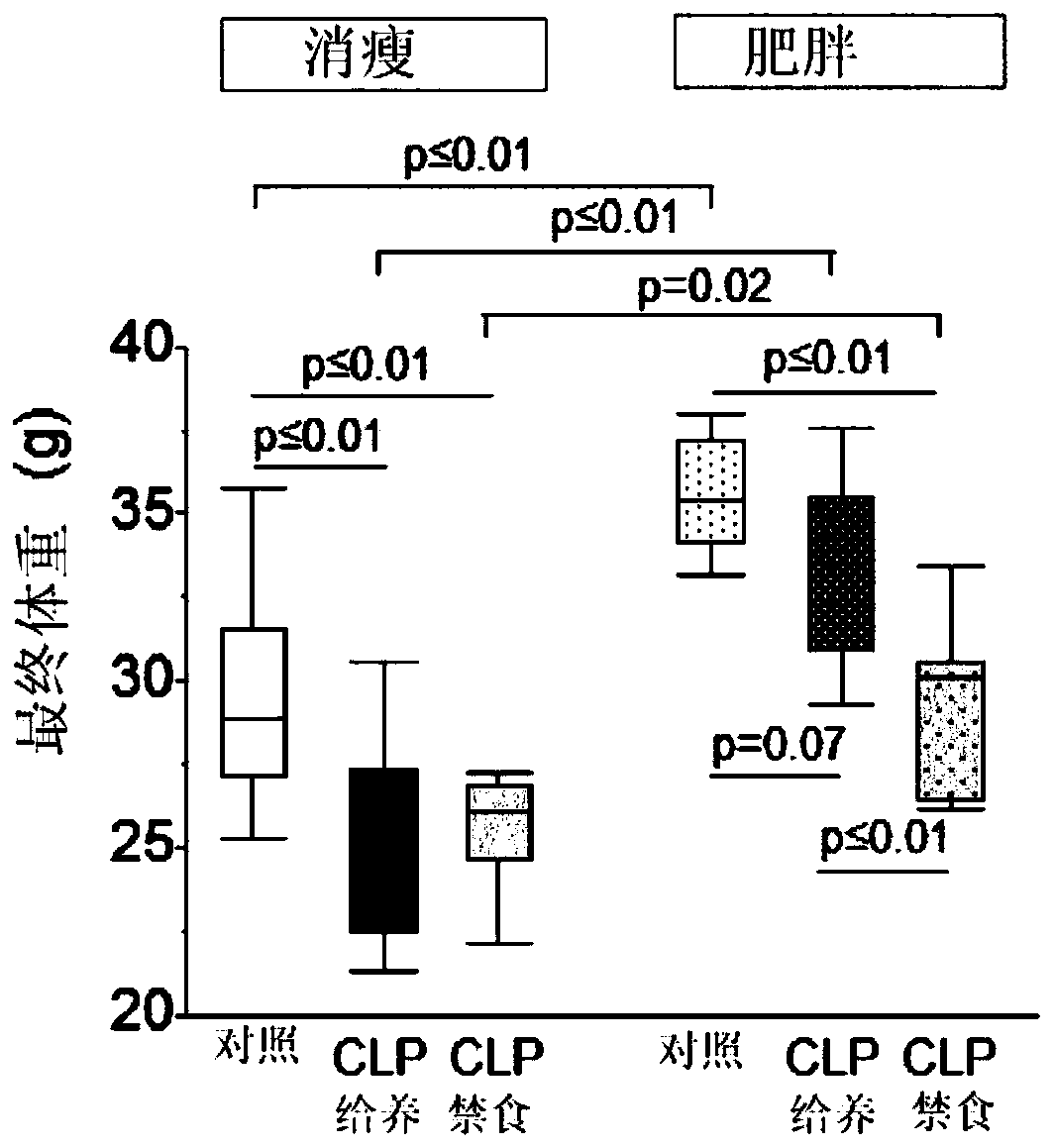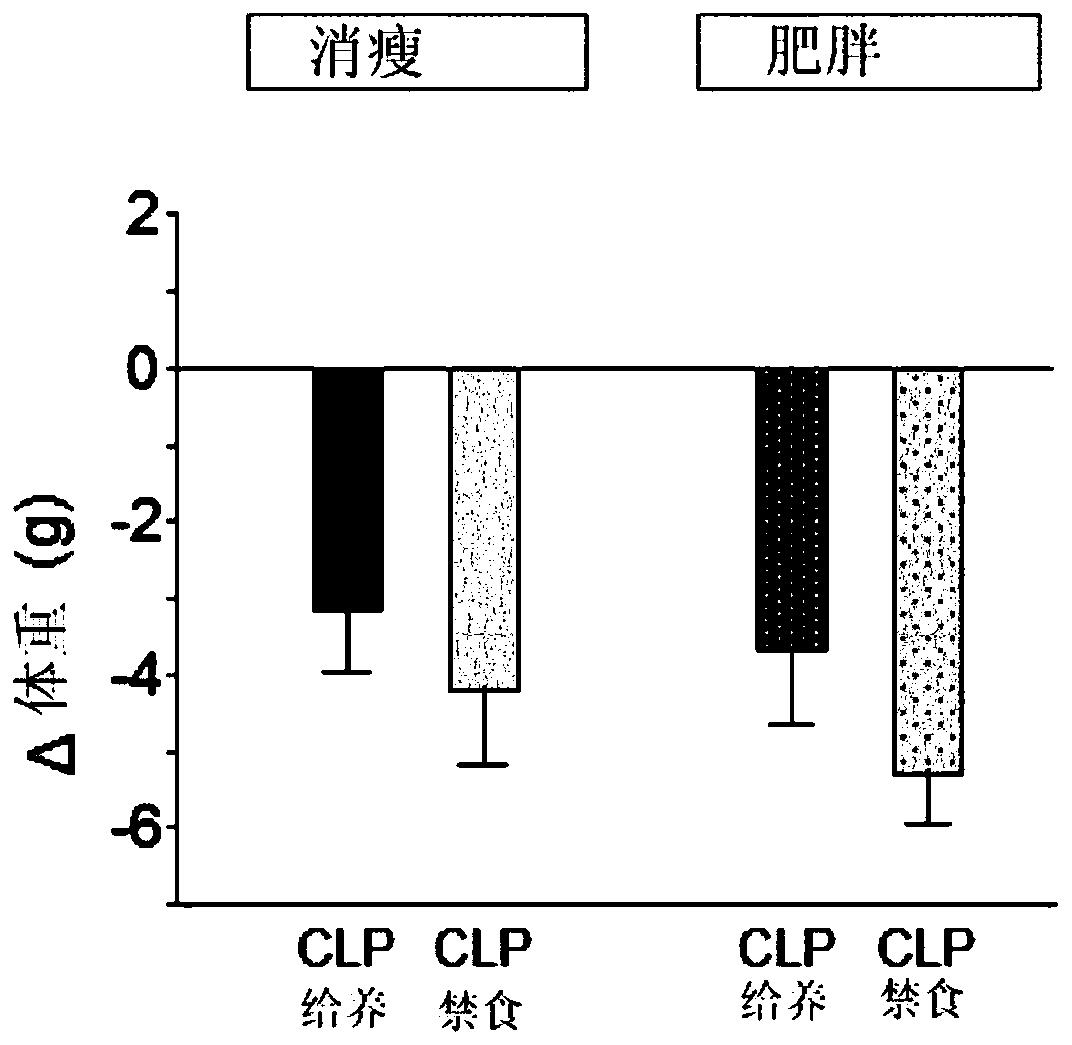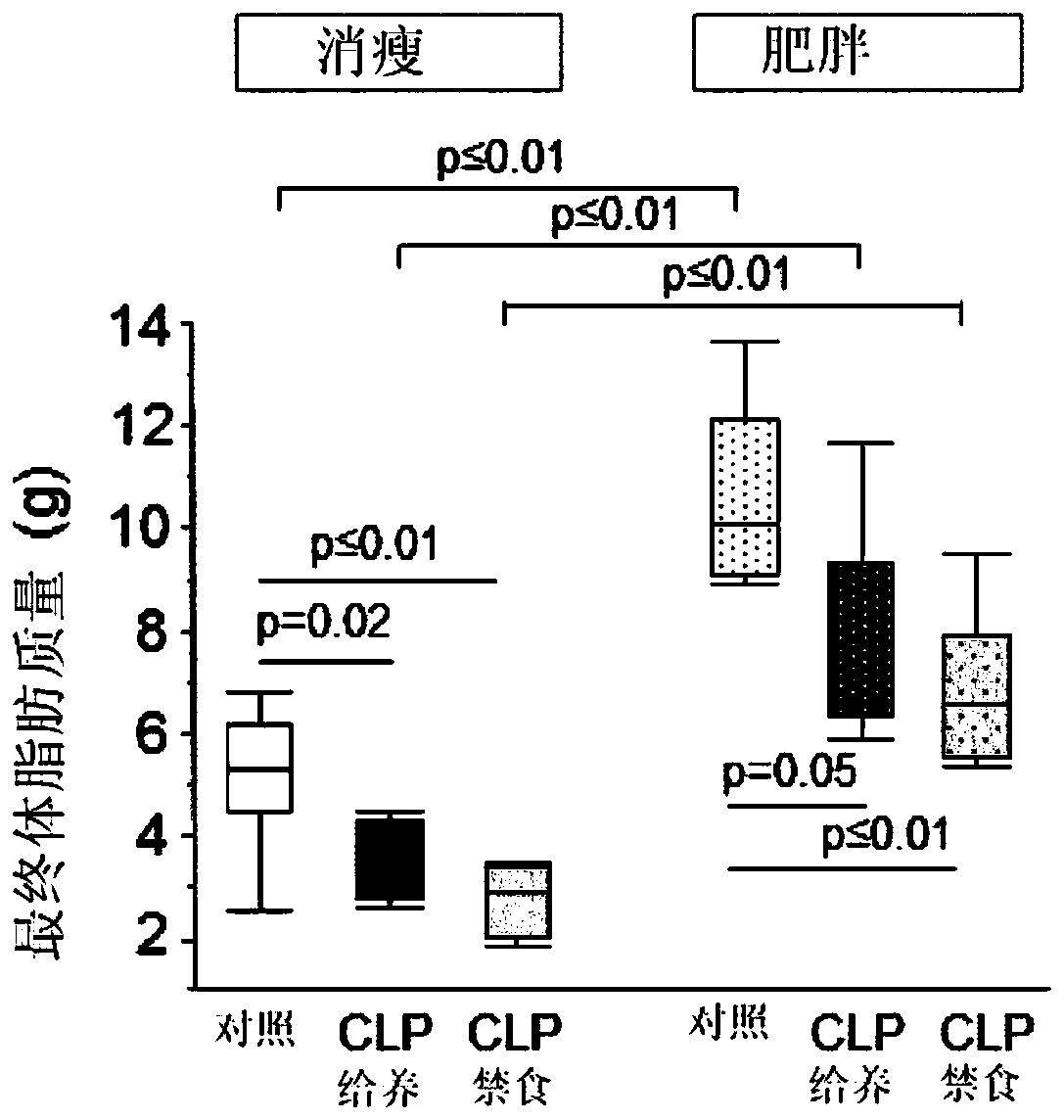3-hydroxybutyrate alone or in combination for use in the treatment of critical care treatment
A technology of hydroxybutyric acid and sodium hydroxybutyrate, which is applied in the direction of drug combination, anhydride/acid/halide active ingredients, medical preparations containing active ingredients, etc.
- Summary
- Abstract
- Description
- Claims
- Application Information
AI Technical Summary
Problems solved by technology
Method used
Image
Examples
Embodiment 1
[0127] Example 1: Mouse Study - Body Composition
[0128] We hypothesized that during critical illness, fat mobilized from excess adipose tissue could provide energy to vital organs more efficiently than exogenous macronutrients and that this might prevent lean tissue atrophy. We tested this hypothesis in a mouse model of central venous catheterization in cecal ligation and puncture (CLP)-induced septic critical illness and in human studies. The effects of 5 days of critical illness on body weight and body composition, muscle atrophy, and weakness were compared in lean and premorbidly obese mice, under fasted and parenterally fed states, respectively. In addition, in matched lean and overweight / obese critically ill patients, we compared markers of muscle atrophy in muscle biopsies of the two muscle groups (vastus lateralis and rectus abdominis) MRC) total score quantifies muscle strength.
[0129] Before CLP, the body weight of obese mice was significantly higher than that o...
Embodiment 2
[0131] Example 2: Mouse studies - markers of skeletal muscle atrophy and autophagy
[0132] We investigated whether less activation of the atrophy pathway could explain the maintenance of muscle mass and muscle fiber size observed in obese CLP mice. Muscle protein content tended to be reduced in lean fed CLP mice compared to lean healthy control mice (83.9 μg / mg±8.3 μg / mg vs 55.1 μg / mg±10.1 μg / mg, p=0.06), and was Decreased in lean fasted CLP mice (50.4 μg / mg±11.1 μg / mg compared to lean healthy controls, p=0.01). In contrast, obese CLP mice maintained their muscle protein content (108.1 μg / mg±20.8 μg / mg vs. 76.1 μg / mg±14.8 μg / mg in fed CLP mice, p=0.8; and fasted CLP was less Rat 63.5 μg / mg±6.6 μg / mg, p=0.1). Gene expression of markers of the ubiquitin-proteasome system, Fbxo32 and Trim63, was upregulated in lean and obese CLP mice (Fig. 3a-b). Fasted lean CLP mice showed a further increase in the expression of Fbxo32 and Trim63 (Fig. 3a-b). The activity of the proteolytic...
Embodiment 3
[0135] Example 3: Mouse Study - Ectopic Triglyceride Content
[0136] To determine whether effects on lipid content might contribute to the maintenance of muscle mass in obese CLP mice, muscle triglyceride content was quantified. While healthy lean and obese mice had comparable muscle triglyceride content, muscle triglyceride content was reduced in lean CLP mice independent of nutrient intake (Fig. 4a). In contrast, muscle triglyceride content was maintained in fed and fasted obese CLP mice (Fig. 4a). In addition, muscle mass of the tibialis anterior muscle was significantly correlated with muscle triglyceride content (R=0.498, p=0.0002).
[0137] We then investigated whether a similar effect existed in the liver. Healthy lean and obese mice had comparable hepatic triglyceride content (Fig. 4b), confirming the absence of potentially adverse features of morbid obesity-associated hepatic steatosis. Hepatic triglyceride content was reduced in lean CLP mice regardless of nutrie...
PUM
 Login to View More
Login to View More Abstract
Description
Claims
Application Information
 Login to View More
Login to View More - R&D
- Intellectual Property
- Life Sciences
- Materials
- Tech Scout
- Unparalleled Data Quality
- Higher Quality Content
- 60% Fewer Hallucinations
Browse by: Latest US Patents, China's latest patents, Technical Efficacy Thesaurus, Application Domain, Technology Topic, Popular Technical Reports.
© 2025 PatSnap. All rights reserved.Legal|Privacy policy|Modern Slavery Act Transparency Statement|Sitemap|About US| Contact US: help@patsnap.com



